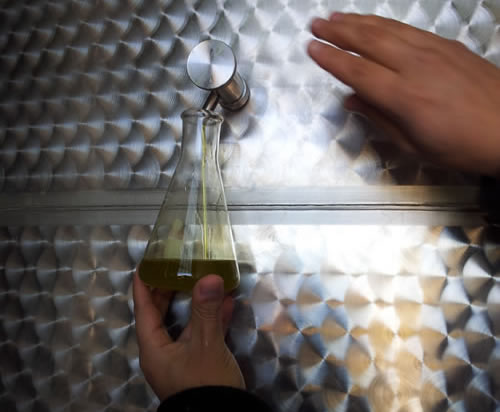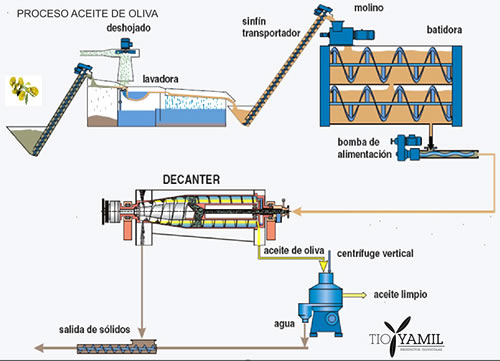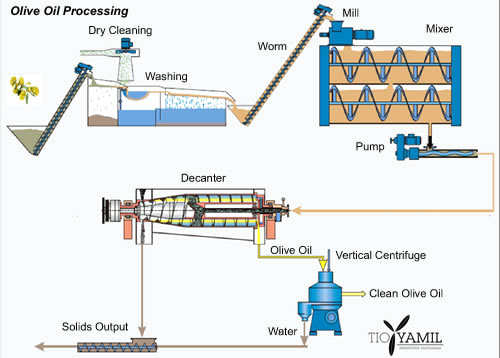ACEITE DE OLIVAOLIVE OIL
1. Cosecha: La aceituna es cosechada en forma manual o mecánica. La misma comienza a mediados de Abril y finaliza en Mayo-Junio.
1. Harvest: The olives are harvested by hand or mechanically. Harvest time begins in mid-April and ends in May-June.
2. Pesaje: La aceituna se pesa en báscula.
2. Weighing: The olive is weighed on scales.
3. Recepción: Una vez cosechada y pesada, la aceituna es recepcionada para su posterior molienda. Se efectúan diversos análisis para determinar la aptitud de la materia prima.
3. Reception: Once harvested and weighed, the olives are received for later grinding. Various analyses are performed to determine the suitability of the raw material.
4. Limpieza en Seco: Si el lote de aceituna cumple con todos los requisitos de calidad, se encuentra entonces en condiciones de ser procesada. Para ello se transporta la aceituna por cintas transportadoras pasando por una corriente de aire que elimina los elementos más livianos ella: hojas, tallos, etc.
4. Dry Cleaning: If the olives meet all the quality requirements, then they are able to be processed. The olives are transported by conveyors belts passing through an air stream which removes all lighter elements like leaves, stalks, etc..
5. Lavado: Posteriormente la aceituna se lleva hacia una “lavadora” provista de agua potable, dejando la aceituna totalmente limpia.
5. Washing: Then the olives are taken to a "washing machine" provided with drinkable water, leaving the olives completely clean.
6. Molienda: La aceituna ingresa al molino de tal forma de producir un “triturado” o “pasta”.
6. Milling: The olives enter the mill to be crushed and turned into a pasta.
7. Termobatido: La “pasta” de aceitunas se “amasa” por un tiempo a una determinada temperatura (no más de 30ºC) lo que facilita la liberación del aceite.
7. Thermo-mixing: The pulp of olives is kneaded for a while at a given temperature (no more than 30° C) which makes the release of the oil easier.








